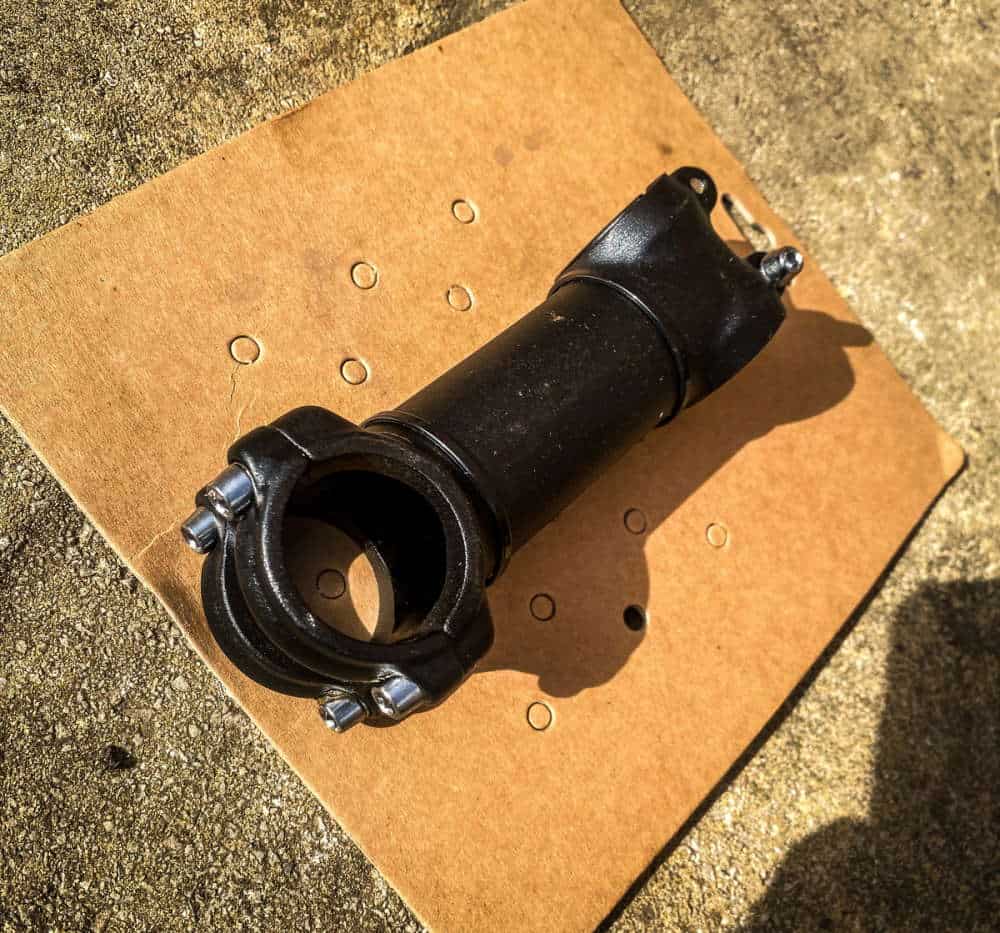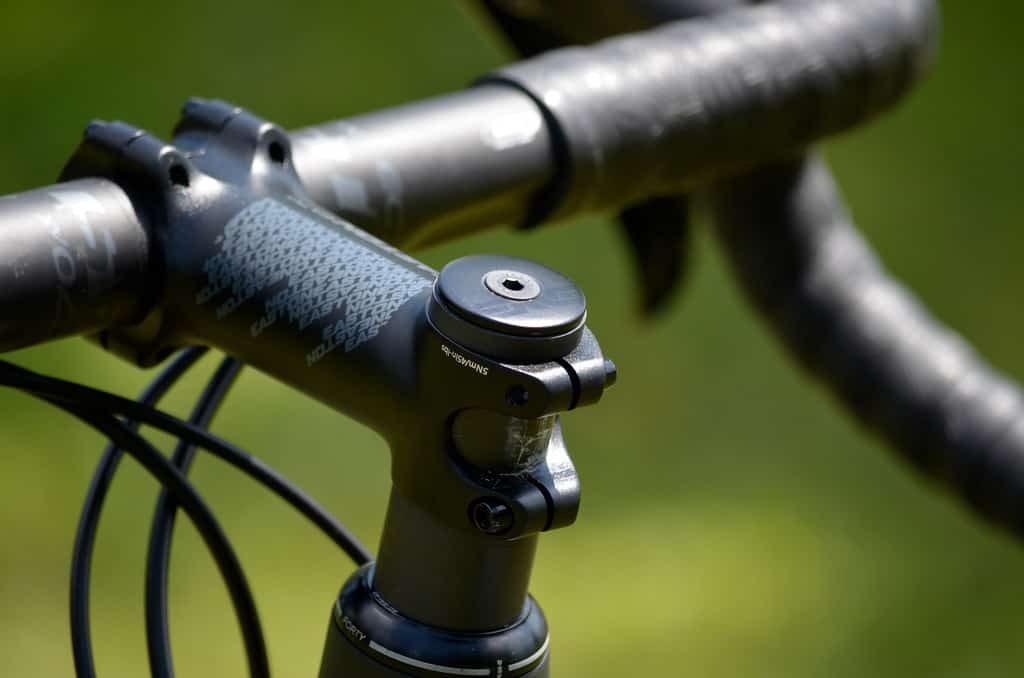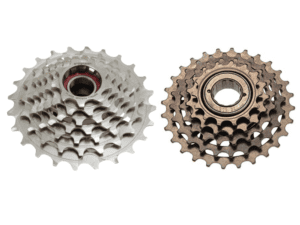If you want to purchase the right stem for your bike, you need to learn how to measure bike stems. The bike stem length will fit your body weight and riding style.
This guide would cover measuring your bike stem and choosing the right one for your riding experience.
What Is A Bike Stem
A bike stem connects the bike frame to the bike handlebars, and it comes in different sizes and lengths. You can install the component with a steerer tube, but the installation method will depend on the type.

Bike stems can also be made with carbon fiber or aluminum alloy, and they can be heavyweight and lightweight. Let’s take a closer look at how to measure it.
What You Need
You don’t need a lot of tools to measure a bike stem since it’s a straightforward process. The essential tools are a pen and measuring tape in millimeters or centimeters.
You might also need some paper and a calculator for the values. A bike stand is another vital tool to keep your bike in place.
Steps to Properly Measure Your Bike Stem
Step 1: Keep Your Bike in Place
Before measuring your bike stem, you need to place it against something firm or put it in place. If your bike is set against a firm platform, it would be easier for you to find the right stem angle and position, which would be helpful when measuring the bike.
There are different ways to stabilize your bike to measure the bike stem. You can put it in a bike frame stand or use a trainer. If you don’t have any of these, you can place the bike frame against the wall or another firm, upstanding surface.
Step 2: Measure Your Upper Body Length and Inseam
How tall you are is essential to determine the correct bike stem length, so you need to measure the length of your upper body and inseam. A short bike stem is ideal if your upper body is long, but the inseam is short.
On the other hand, those with a long inseam and short upper body require a long bike stem instead, especially when using a gravel or mountain bike. In most cases, people have a proportioned structure, which allows them to choose a stem length based on their bike type.
You can easily measure your upper body length and inseam length with a measuring tape or ask someone to do it for you.
Step 3: Measure the Ideal Reach
Reach is another thing you need to measure before getting to the bike stem. You can do this by measuring the length from the middle of the head tube to the base bracket. The reach measurement differs based on the design of your bike.
If your bike has a stem rise, the measure of the reach is the horizontal projection of the stem. But, if the bike stem is situated parallel to the ground, the measurement of your reach is the stem length. The bike stem length will determine the reach of your bike.
You would need to change your stem length if your legs are cramped or stretched when you ride your bike, as this means the reach is too short or too tall. So, while measuring, you can attempt to ride the bike or use your previous experiences.
Step 4: Keep the Right Position in Mind
The next thing you need to do is keep the optimum position in mind before measuring. The correct bike stem will allow your arms to bend when holding the handlebars, as this prevents fatigue in your arms. But if the bike stem is extensively long, your arms would get easily tired. So, keep this in mind when choosing the right length.
It also helps to sit on your bike to look at the front hub when choosing the perfect bike stem length. If you don’t see it well, you have a good length.
Step 5: Start Measuring the Bike Stem Length
You can start measuring the stem length with all of these considered. Remember that the stem length follows metric, so the best way to measure is in millimeters or centimeters.
Take your tape measure and place the beginning on the middle point of the bike’s handlebars. From there, pull the tape till you reach the center of the headset and record the measurement. Usually, the bike stem length is in millimeters, from 70 to 140 mm in 10 increments.
The ideal range is between 50 and 80 mm for a mountain bike. They can also be a few millimeters off, but you can easily round it up to the nearest tens.
If you’re converting measurements from centimeters to millimeters, you should add a zero at the end of every measurement. Also, remember that measuring a mountain bike stem length is the same process as a road bike.
Factors to Consider When Selecting Bike Stems
Now that you know how to measure your bike stem, the next thing to do is select the right one for your bike. Here are some helpful factors to keep in mind.
Crosscheck the Handlebar Diameter
This means that you should check the diameter of your bike’s handlebar when the stem locks on. While you can easily measure the diameter on your bike with a ruler or tape rule, it is usually 25.4 mm for older MTB models and 31.8 mm for the newer ones.
There are also some bikes with a measure of 35 mm. Once you know the diameter, check if your stem length can accommodate it.
The diameter of your handlebar is also connected to how stiff they are, and stiff handlebars mean more comfortable riding. If you like your handlebars stiffer, you can go for those with a 35 mm diameter, but there aren’t a lot of stems that fit that.
Calculate the Bike’s Rise
Another thing is the rise, which can be defined as the angle of the body of the bike stem. Bike stems come in different angles or amounts of rise. The amount of rise you use depends on whether you want a higher or lower front end.
Those who want a higher front end use handlebars with more rise, but a flat handlebar is better for a lower front end. How high the front end depends on the handlebars, especially with a mountain bike. But if you’re not sure, you can go for a rise between 5- and 6-degrees angles.
If your stem length is lower than 70 mm, you should go for a zero-degree angle rise. This sets your clamp in a neutral place and does not restrict you to the front end.
Check the Clamp Design
Finally, you need to consider the clamp design when choosing the right stem length. The stem on a road bike has clamps on the front handlebar and the fork steerer tube.
Also, lookout for a stem that doesn’t have protruding rear clamp bolts. Having protruding bolts will injure or hurt your knees if you accidentally crash, which is why you should reduce it.
Conclusion
Now that you know how to measure the stem length of your bike, you can purchase the right type for your riding experience. Remember that the simplest way to measure your bike stem is to go from the center of the handlebars to the headset, and you can get the correct length.
Although you measure your bike stem length, you don’t have to worry about the width because they usually have a standard width. This means that most of the bike stems you find on the market will fit nicely between your stem and handlebars.
You can measure your stem within a few minutes and purchase the perfect length to improve your biking comfort and performance.





